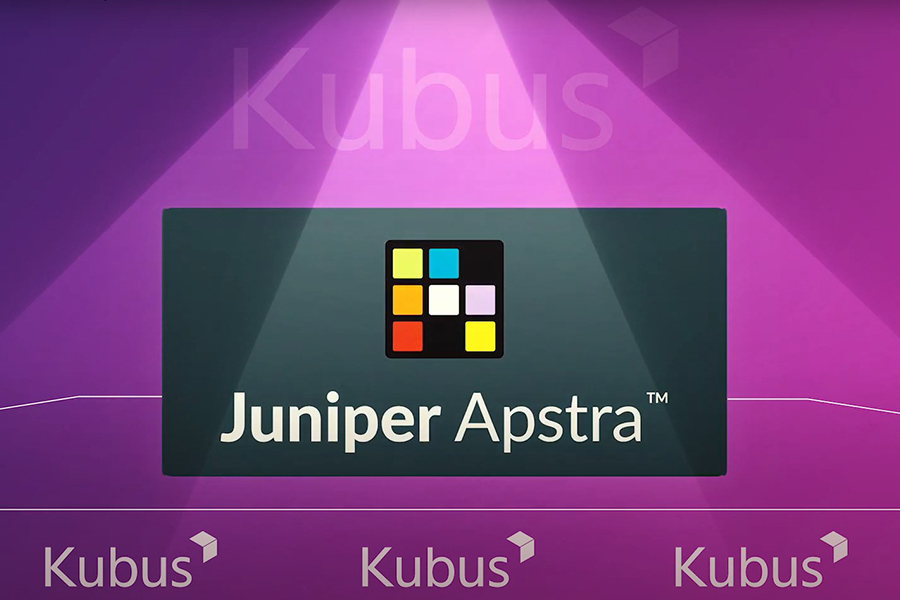The Importance of Customer Experience
Why Is Your Customer Experience So Important?
Since 2018 -and even more so since the Covid-19 pandemic- there has been a major shift in consumer spending habits, with more customers putting their money towards experiences rather than material items. In fact, a survey in 2020 showed that 76 percent of consumers would rather spend their money on experiences, rather than material items; and with this new priority of consumer spending persisting to this day, it looks like the prioritisation of memorable experience is here to stay.
Whether watching sport, seeing a concert, or going out for the day to a shopping centre or theme park, people are looking for more immersive, engaging experiences. Customers want their day out to be hassle free, safe, and fulfilling. They want to get the most they possibly can out of their visit. As a provider for your customers, it’s you and your staff’s responsibility to ensure that your customers day surpasses their expectations. This responsibility doesn’t only weigh on your employees’ shoulders though; to provide a truly memorable experience, your IT infrastructure should be capable of enabling you to provide a modern, catered, and truly personalised day out for your customers.
By creating a memorable experience, you can enhance customer loyalty, boost referrals rates, and challenge the alternative that is the at home-live experience.
Enhancing Your Customer Experience
Businesses that operate with and in fact require large footfall -like sports, entertainment, and retail venues- have all begun adopting new technologies that aim to improve the customers enjoyment throughout their journey. Despite this, there are still some key customer pain points that are yet to be addressed. Entry to venues. Queues for merchandise and food. The demand for immersive, personalised customer experiences. All of these contribute to leaving a long-lasting, memorable impression with the customer.
With some small changes the business opportunity for your organisations is massive. By utilising an architecture that suits the needs of the modern-day customer, you’ll be able to understand your customers using real-time data, providing insight into when and where your customers are in your establishment. In turn, you can:
- Increase sales.
- Streamline operations.
- Improve safety by understanding pinch points.
- Build a better commercial business model, attracting more sponsorship deals.
- Maximise retailer shop space.
- Find out what productions/shows perform the best.
- Allocate staff more efficiently.
By providing a high-density, sustainable network which is purpose-built for sports, entertainment, and retail venues, you can create new opportunities for captivating and engaging content to enhance the attendee’s experience.
Stronger Wi-Fi. State-of-the-art digital signage. Cameras and sensors paired with intelligent analytical and management software. E tickets. By delivering a more convenient and customised experience, patrons will be kept fully engaged and informed. All of this helps towards making their experience with your business unforgettable.
How Can We Help?
If you are looking to improve your fan experience, we can help you. With access to cutting-edge solutions and technology thanks to our connections to world leading vendors, we can help you find the perfect solution for your business and its specific needs.
Make your customer’s experience unforgettable and keep them coming back. Get in touch today to find out what we can do to help you.

Kubus Offers Apstra from Juniper
We like to think of every business like a house – which as we know needs strong foundations – and as your business and reliance on your data grows so these foundations become more and more critical.
At Kubus your data is our business. We have spent 20 years supplying the technology that has given our clients the security and reliability to achieve their goals.
BUT every house needs to modernise (if it is to provide a safe, secure and easy to maintain environment). The ever-growing demands placed on data centres can put systems into overload, leaving them vulnerable to problems caused by an overstretched workforce or inappropriate hardware. No house needs that.
As a Juniper Elite Plus Partner we bring an agility born of real-world experience that makes us ideally suited to deliver revolutionary products and services, which is why we are proud to offer Apstra from Juniper.
Apstra is the only solution of its kind that works with many of the leading networking vendors, empowering you to automate and manage complex network environments regardless of location, vendor or topology, because no two houses are the same!
Kubus and Apstra Together
Kubus work with you to set the strategic intent, Apstra automates and validates the design, then oversees the deployment, and operation of your network. One source of data controlling the whole network, a single-source-of-truth, that can pinpoint and resolve issues quickly.
Apstra’s predictive insights averts outages and can even remove faulty devices from the data-path without impacting performance or connectivity. This allows you to repair and replace them safely with no impact to the network. A fully autonomous command and control centre that brings full automation at the click of a button, keeping your house in order, always.
Apstra’s record speaks for itself:
- reducing network delivery times by up to 90%
- reducing outages by at least 50%
- reducing operational costs by up to 80%
- investment payback in less than 6 months
Apstra provides future-proof business development for the reliable experience your customers deserve. We are proud of the long-term client relationships that are testament to our reliability, honesty and capability.
And we can’t wait to help turn your house into a powerhouse.
Kubus with Apstra.
Learn More About Apstra
Kubus and Juniper Networks have teamed up to deliver a 4-part series of Apstra webinars for those who want to learn more or dive deeper into the details:
Contact Us
Want to know more about Apstra and how we can help you get more from your network? No matter what stage you are at with network management and systems, we’ve got someone at your level who’ll be happy to discuss opportunities (or pain points) with you.

The Kubus Podcast is Here
We are very pleased and proud to announce the publication of the first episode of our new podcast: Kubus Podcast Series. In each episode we’ll be meeting and talking to individuals who can give us real insight into the problems, solutions and people in our technology industry.
In the first episode this series, Katy Maley (Vendor Manager at Kubus) sits down to talk to Kubus’ Paul Bonner (Chief Technical Officer and all-round bearded boffin) about his time in the company, managing an ever-growing technical team, collaborating with our customers’ engineering teams, the support side of Kubus, what makes Kubus a unique Juniper partner, and various other Kubus-related topics.

Katy Maley
Podcast Host and Vendor Manager at Kubus
In future episodes we’ll continue to explore the relationships we have with our vendor partners; explore the products and services they offer at the cutting edge of network, cloud and security technologies; and dive into some case studies exploring specific business requirements and the selection methods and technical solutions used to satisfy them.
We’ll also drag in some other members of our Senior Leadership Team for insights into what working for Kubus means for them and their stakeholders.

Paul Bonner
Chief Technical Officer at Kubus
Whilst we continue to wrack our brains for a catchier podcast title, why not listen to the first episode? You can listen now using the player below, or get it from all good podcast services and apps including Anchor, Google Podcasts, Pocket Casts, and Spotify, just search for Kubus Podcast Series.
We hope you enjoy it. Don’t forget to share and click Subscribe!


[Extract] Empowering digital transformation
The following is an extract from an article written by Kubus and published by Business Reporter.
Evolution. Adapting to survive. Basic principles of the natural world; fundamental necessities in the business world. With the digitisation of many everyday activities, businesses must evolve to meet ever-changing customer demands.
Over the past few years, largely due to the Covid-19 pandemic, these ever-changing customer demands have seen a major shift, setting a precedent for the new normal. With the numerous lockdowns and social distancing restrictions of 2020 and 2021, many businesses had to find new ways of operating, all while attempting to maintain similar levels of turnover.
For many businesses, this new way of operating has involved some form of digital transformation – the process of digitising necessary areas of operations to adapt and overcome modern-day hurdles.
You can read the full article here: Business Reporter – Empowering digital transformation

Cisco SD-WAN Solutions: How could they help me?
Have a read of a few Cisco SD-WAN case studies from customers across the world to learn more.
A Large Healthcare Organisation
Pierce V. Systems/Network Engineer – Manager
We had started to look at remote connectivity options before the pandemic hit. Last fall, we embarked on a proof of concept using Cisco SD-WAN technology. We decided to limit ourselves to one vendor for SD-WAN because we wanted to stay with a single platform to manage both our on-prem and offsite users.
There are two key benefits to SD-WAN technology:
- It works over any public internet connection. We don’t have to lease special lines or sign SLAs with ISPs to ensure a stable and secure connection. The SD-WAN router shapes traffic and creates a secure tunnel that connects users to our network 24/7.
- The cloud-based configuration and activation. Our remote access support team can set up a Cisco SD-WAN router here and activate it after an employee brings it home. It’s plug and play for end users and administrators, and a lot easier to manage than setting up individual VPN accounts and login credentials.
As a result of the recent pandemic, we fast-tracked our implementation of this solution.
Our call center employees are now working from home because they cannot maintain social distancing at our facilities. As a primary point of contact with the healthcare network, they are frontline workers despite working remotely. We cannot risk compromising their call quality or access to our electronic health records and our booking systems by connecting them to our network via a lossy VPN connection.
We are also providing SD-WAN connectivity to cardiologists, radiologist, and other specialists who need to download high-resolution image files like CT scans, MRIs, and X-rays. These documents are gigabytes in size and require the fastest and most stable connection we can provide to ensure their reliable transmission, and an SD-WAN link is the next best thing to a dedicated line.
I have an SD-WAN connection in my house, and it feels like I’m back at the office. I have access to our shared drives, monitoring systems, and data centers, 24/7. I can walk into my home office, wake up my computer, and I’m on the corporate network in seconds. It’s seamless.
One of my voice team members is on the West Coast and connects to our network from his home in California. There are roughly 80 milliseconds of lag between his router and our data center, but you can’t tell when you’re talking to him. He’s got a couple of phones on his desk but sounds like he’s in the next room, and not 2,500 miles away. We couldn’t have pulled this off with a VPN connection. The call clarity is astounding.
VR Group – Transport
Pasi Louko Senior Network Architect
Cisco’s software-defined network solution provides the perfect combination of security, scalability, and flexibility. It is completely unmatched in the market.
With the vision of the perfect architecture in my mind, and Cisco’s SD-WAN tools in my hands, I presented my plan to management. I designed the entire infrastructure in advance, including a three-phase timeline. My supervisor, saw the simplicity and power in my design, and I received a green light for the plan.
By September 2019, we’d completed the core infrastructure design. Since we are owned by the Finnish government, we needed to hold a public competition to find an operating partner who would manage our network. The entire process took five to six weeks, but by early February 2020 we signed the contract and were ready to begin the actual migration.
We had multiple sessions designing our new network-and the processes that went along with it. Under the new design, VR Group network architects like myself would be entirely responsible for design management. We own the devices and support contracts and provide operators with templates for any infrastructure problems or changes. The operators serve more of a direct physical support role, focused on basic operational matters.
Using this process gives the network architects greater control over a more centralized and unified structure. Changes to the entire network can be made in a matter of hours instead of taking several days. Meanwhile, the operators are happy because using templates-rather than having to perform manual changes-makes their work much easier. This alone provides a significant reduction in costs and employee time.
We also saved money on hardware. With a system that was more than a decade old, we were eventually going to have to update it. That would have required a large upfront capital investment, which wasn’t exactly in line with our cost-reduction goals. Using a software-defined network, however, changed that reality. Our larger offices no longer used cables. Most of our staff and equipment operated using Wi-Fi, with smaller offices using LTE and larger facilities using 4G connections. While these may not seem like a big deal, every little bit matters to that bottom line.
Transitioning to SD-WAN represents a huge leap forward for our company, and indeed our country. Traditional infrastructure uses static routing, which requires large investments of money and time to make changes. Our new software-based architecture, however, has transformed VR Group into a company that is truly dynamic. Any required changes or updates happen faster and easier and only have to be made once before being automatically updated to every device. Our structure is unified, with a central unit providing design oversight.
As a testament to the speed of provision, in two months, we have migrated more than 96% of our users to the new network. I love the standardization and simplified network management. My supervisors love that operational costs are significantly reduced because of new SD-WAN solution. We expect to complete phase one within the coming weeks, with all users on the new network. Phase two of the process will focus on implementing stronger security measures and a simplified firewall structure. After we have lived with the system for a while, phase three will involve a closer system review and an examination of unnecessary hardware.
With this new system in place, Cisco will have helped VR Group drastically improve our efficiency. By the time we finish phase three, we will have a complete and ongoing picture of the traffic flow between services and clients. We will be better able to manage the scope and flow of our applications and better select security products according to our needs.Anyone who has been in IT for a while understands how quickly equipment, infrastructure, and applications can become outdated. Most of us have inherited solutions that probably worked great when first purchased, but whose effectiveness has lessened over time. Thanks to the incredible flexibility inherent to the software-defined model, Cisco has helped us overhaul our network and continue our operational efficiencies for years to come. When it comes to the future of transportation in Finland, VR Group is definitely on the right track.
Tamimi Markets – Retail
Joel Marquez IT Director
I started here as a programmer in 1993 and am now the Director of IT. The supermarket industry has shifted from on-prem applications to cloud-based solutions, and we had to change with the times.
Our WAN was another challenge. Network traffic from our supermarkets, warehouses, branch offices, and remote users were all routed through our head office via three separate ISPs. The only way we could protect our data was via IPSEC over MPLS (IPVPN) tunnels which slowed connectivity and blocked visibility. We couldn’t tell, for example, if a marketing manager working from home had proper endpoint protection on their computer.
We were also 100% dependent on these three ISPs—who typically didn’t talk to one another—for end-to-end connectivity. If one of them slowed down due to network congestion or went offline due to a system failure, we were at their mercy. Stores and offices that used their infrastructure were cut off from our head office and the rest of our network.
We also suffered from a lack of control over the quality of network services or infrastructure upgrades. When we needed new capacity, we added physical equipment at each of our locations. It was costly and the installation and configuration was all manual. After the extra effort and expense, we still had to contend with limited bandwidth from our ISP partners. Essentially, we were employing band-aid solutions as the demands on our network grew. Our overall IT infrastructure had become obsolete and stretched too thin.
The impact of these deficiencies was huge. Our network was slow, poorly secured, and not very visible. In broad terms, our growth and brand image suffered as customers became frustrated with long checkout lines caused by network delays and waiting for their loyalty points to be recognized. Our out-of-date software and slow network connections were impacting our business and reputation.
We needed to upgrade our IT infrastructure and reflect our new and innovative image by improving both service and the total shopping experience. We also needed an IT infrastructure that could keep up with our aggressive growth plans.
Putting out calls for vendors and went through several proofs of concept. At the end of our selection process, one solution stood out: Cisco Secure Access Service Edge (SASE) including Cisco SD-WAN and Cisco Umbrella.
The outcome…
Cisco SD-WAN allowed us to switch from a traditional network to a software-defined infrastructure. The first and foremost of its benefits is true branch independence through direct internet access. Our stores, warehouses, and offices no longer have to backhaul network traffic through our headquarters to talk to one another, which speeds things up tremendously.
The second advantage is carrier independence. The beauty of an SD-WAN solution is that it frees you to choose whatever public or private infrastructure is most convenient. We are no longer constrained to our three ISPs. We have retooled our setup, and our branches are now connected via a fiber loop. We run broadband on copper (Business DSL) as a backup, 4G for wireless, and eventually 5G. If one of these networks fails, it switches automatically to another. We no longer have to wait for a provider to effect repairs and are assured of connectivity between locations by rerouting it across other infrastructure.
We can also add or change service providers with ease when better options present themselves or if we need more bandwidth. In the past, we had to accept outrageous rate hikes whenever we needed more bandwidth or speed. Now, we are free to shop around and get what we need without adding physical equipment to our network.
Using the Cisco SD-WAN integration with Cisco Umbrella gives us effective cloud security throughout our SD-WAN fabric. We can now see which devices employees are using to connect to Tamimi Markets’ SD-WAN, restrict them to the most secure protocols, and even limit the applications they can use while connected to the network. We’ve never had application visibility like this before. This added security protects our staff from the ever-present threats on the internet.
The secure SD-WAN integration offers the flexibility and security we need to update our IT infrastructure and better serve our customers and employees. I’m a long-time fan of Cisco, and I knew they could deliver the product we needed, but the real difference is their support. With other suppliers, my engineers could spend hours on Google looking for ways to resolve an issue. With Cisco, we open a ticket, and they get back to us in no time. You don’t get that level of service from other technology partners.
Although COVID-19 slowed the planned deployment of our new infrastructure, I’ve already noticed a tremendous improvement in speed, stability, and bandwidth across all our operations utilizing SD-WAN. Like most companies, we’ve had to use video conferencing for many of our meetings during the pandemic. In the past, this meant putting up with severe lags that caused garbled sound and stuttering video. It was impossible to communicate clearly or get anything done.
With Cisco SD-WAN, those days are behind us. Our new infrastructure handles video traffic with ease. It has also improved the customer experience for Tamimi Markets shoppers. Our points of sale have a seamless and fast connection to our customer loyalty database and other cloud-based utilities, thus accelerating the checkout process. Our growing customer base no longer has to wait for access to their loyalty points and paying for their purchases is much faster.
With Cisco SD-WAN and Cisco Umbrella, combining to form a true SASE solution, we have achieved direct-to-internet access which helps us propel inventory management and other processes that put food on our shelves, satisfies our customers, and keeps them coming back to Tamimi Markets with smiles and anticipation of an even more enjoyable shopping experience. Now that’s a competitive advantage!

Global Cloud Security Platform Provider
One of our longest standing relationships is with a global cloud security platform provider that consume huge amounts of compute & store hardware on a regular basis.
This presents challenges in the form of bottlenecks, fulfilling new contracts and seeing depleting business due to impatient customers that are not prepared to wait for services to be brought online. After discussions with the company regarding the specifications required for each of their product offerings, we suggested a rationalized set of “Standard Builds”. This reduced the 144 different builds they were buying direct from the Vendor, to 6 Options based on the same 1U Server Platform.
We would then stock this standard chassis for them to utilise as required. Ultimately, lead times were reduced to days rather than weeks, and costs dramatically decreased due to the purchase of fewer different products.

Online Gaming Platform Provider
An online gaming customer had recently rolled out a quantity of 2U Servers from a “white box” Server vendor, that would readily accept generic fast Intel/Samsung SSDs. They’d reasoned that running several 2U devices filled with cheap SSDs would be cheaper than a dedicated Storage device from a Tier 1 vendor.
However, when faced with their quote, we reviewed it and were able to offer a more efficient solution. The solution we proposed was based around HPE 3PAR. This gives a significantly faster service at a similar price point and is the solution they subsequently went on to purchase.

European Independent Intergovernmental Weather Organisation
A European Weather Organisation approached Kubus as they were unable to provide enough electrical power to an additional Cray Supercomputer they planned to purchase, due to their regional network.
We therefore designed and deployed an Nvidia GPU solution based on 2U servers. This NVIDIA GPU cluster is now providing the throughput they need within their available power.

Online Cycling Retailer
An online Cycling retailer were looking to purchase additional VMWare Licences in order to expand their cluster onto the server estate of a recently acquired competitor.
They initially had licence costs of over £60k to cover the expansion program as the servers they ran were a mixture of Gen 8 and Gen 9 HPE server. By utilising their existing licences, we consolidated the older devices, replacing the entire estate with new Gen 10 devices. Not only did this dramatically reduce the cost of the VMWare licensing, but the new servers also included 5-Years of support, negating the need to invest in additional support for their existing estate.
This then allowed them the available funds to replace their storage estate, which was already unsupported, a cost previously beyond budget.

Online/On-Premise Gaming Platform
We were approached by a US based gaming company with a challenge concerning business retention. Latency from their consumer facing web servers to back-end SQL servers was impacting the number of transactions they could process, ultimately negatively affecting revenue.
They came to us looking for low latency switching as a way of boosting performance. Therefore, the solution we designed utilized a unified SAN and Blade chassis. As a result, all compute traffic was kept internally and the latency between front and back-end appliances was removed. We were also able to reduce their existing 4-rack deployment down to a single rack, reducing datacentre costs by $300k dollars per year.
This system went on to win the ‘gaming platform of the year’ award.


